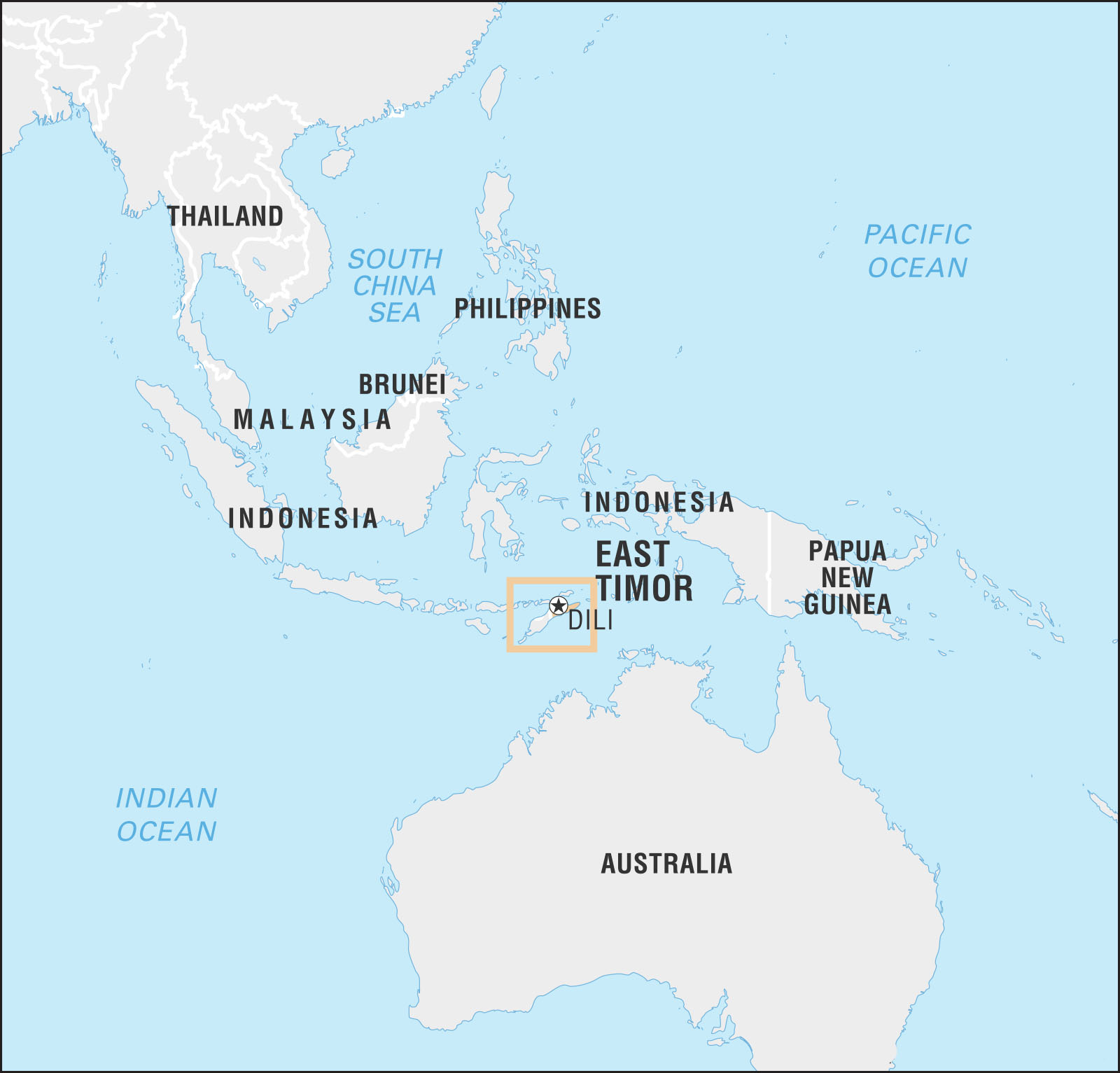East Timor | 20 Apr 2022
Why in News?
Recently, East Timor, also known as Timor Leste, Asia's Youngest Democracy, held the second and final round of its presidential election.
What are Key Facts about East Timor?
- History:
- The territory was colonised by Portugal in the 18th century and remained under its control until 1975.
- When the Portuguese withdrew, troops from Indonesia invaded and annexed East Timor as its 27th province.
- A long and bloody struggle for independence ensued, during which at least 1,00,000 people died.
- In a 1999 UN-supervised referendum, the East Timorese voted for independence, but that unleashed even more violence until peace-keeping forces were allowed to enter.
- The country was officially recognised by the United Nations (UN) in 2002.
- East Timor has applied to be a member of the Association of Southeast Asian Nations (ASEAN).
- It currently holds observer status.
- Geography:
- East Timor is bounded by the Timor Sea to the southeast, the Wetar Strait to the north, the Ombai Strait to the northwest, and western Timor (part of the Indonesian province of East Nusa Tenggara) to the southwest.
- East Timor comprises the eastern half of Timor island, the western half of which is part of Indonesia.
- It spans a 15,000 square km land area – slightly smaller than Israel – and it’s 1.3 million people are predominantly Roman Catholic.
What about the Economy and Political System?
- Politics:
- In nearly 20 years since independence, East Timor’s presidential and parliamentary elections have been dominated by many of the same faces.
- In the political system, the president also shares some executive powers and appoints a government and has the power to veto ministers or dissolve parliament.
- Economy:
- The territory depends on revenues from its offshore oil and gas reserves which account for 90% of its Gross Domestic Product (GDP).
- It has an agreement with Australia to split revenue from the Greater Sunrise gas field, Australia which is worth an estimated USD65 billion.
- The Bayu Undan gas field, its main revenue stream, is set to dry up by 2023 and the country is now planning to collaborate with companies in Australia to turn it into carbon capture facilities.

